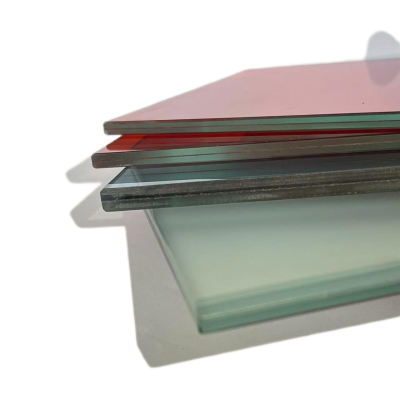Complete Guide to Insulated Glass: Structure, Specs & Performance
Complete Guide to Insulated Glass: Structure, Specs & Performance
So, insulated glass—or IG, if you wanna sound fancy—is basically this modern building material that’s got it all: thermal insulation, soundproofing, and honestly it just looks pretty sleek too. It’s made by bonding two or more glass panes together with this high-strength adhesive stuff, plus there’s an aluminum frame thingy in between that holds some desiccant to keep everything dry inside. And yeah, it actually helps make the building lighter, which architects are totally into these days.
Q: So what’s insulated glass made of anyway?
Basically, it’s two or more pieces of glass stuck together with a real strong sealant, and there’s dry gas filled in the middle—plus that drying agent to suck up any moisture. You can pick different kinds of glass too, like clear, frosted, heat-absorbing, whatever fits the project. Then the whole thing is framed up with aluminum or sometimes glass strips, either glued, welded, or melted together. Pretty neat.
Q: What are the common specs for insulated glass?
Over at Markewei Windows, we usually see stuff like:
- Common structures: 5+15A+5, 5+20A+5, 5+25A+5, 5+27A+5…you get the idea.
- Here “5” means the glass thickness—like, in millimeters.
- And “A” is the air gap. Yep, the space in between.
- You can get air gaps like 6A, 9A, 12A, all the way up to 27A.
So really, the final spec depends on what glass you pick and what spacer you’re using. There’s a ton of combos. Here’s a quick rundown:
1. Glass Types
You can use pretty much any glass: flat, laminated, frosted, heat-absorbing, reflective coated, even tempered. They all do different things, so just depends what you need. For example:
- Float glass should be up to GB11614 standard—Grade I or better.
- Laminated has to follow GB9962.
- Tempered? That’s GB9963.
2. Sealing Stuff
The sealing is super important—can’t have moisture getting in. So:
- The first and second sealant layers should be different colors. Easier to tell them apart.
- The sealant should last at least six months before it goes bad.
- If it’s a hidden-frame curtain wall, the second seal HAS to be silicone.
- Oh, and obviously the sealant’s gotta perform well long-term.
3. Spacer Frame
Usually it’s aluminum, and it’s gotta be anodized so it doesn’t corrode and looks nicer. And before using it, you better clean it properly—no dirt allowed. Otherwise the seal won’t stick right.
4. The Drying Agent
Yeah there’s this stuff called desiccant that goes inside to keep it dry. Super important. Gotta pick one that works well and meets the standards, otherwise your IG unit might fog up later. Not a good look.
Q: Is a bigger air gap better?
For regular double-pane units, glass is usually like 3–6mm thick. The insulation (U-value) does get better when the air gap gets bigger—but only up to a point. Once you go past 14mm, honestly, it doesn’t help much anymore. Actually, it can even get worse because the air starts moving around and conducting more heat.
Fun fact: the type of glass doesn’t really change things that much. Air is a way worse conductor than glass, so making the gap bigger doesn’t do a ton.
Most people say the sweet spot is between 14–24mm. And if you’re trying to save some cash, 20mm is usually the go-to.
Also, the solar heat gain (SHGC) barely changes when you mess with the air gap. Like, going from 14mm to 24mm only changes SHGC by like 0.002. So… yeah, not a big deal.
Q: How good is it at blocking sound and keeping heat in?
It’s really good with sound—like, can cut noise by up to 30 dB. If you pump in some inert gas (like argon), you might get another 5 dB on top of that.
For insulation, it’s solid too. Especially if you fill it with gas like argon. Makes a real difference.
Wrap-up
So insulated glass is obviously a great option if you care about heat and sound insulation. Everything from the glass type, to the air gap, the seal, and the desiccant has to be picked carefully based on what you need. And with the air layer, bigger isn’t always better—go for balance between performance and cost.
All in all, it’s a smart, good-looking, and practical choice for pretty much any modern building.
---


































































































































































































